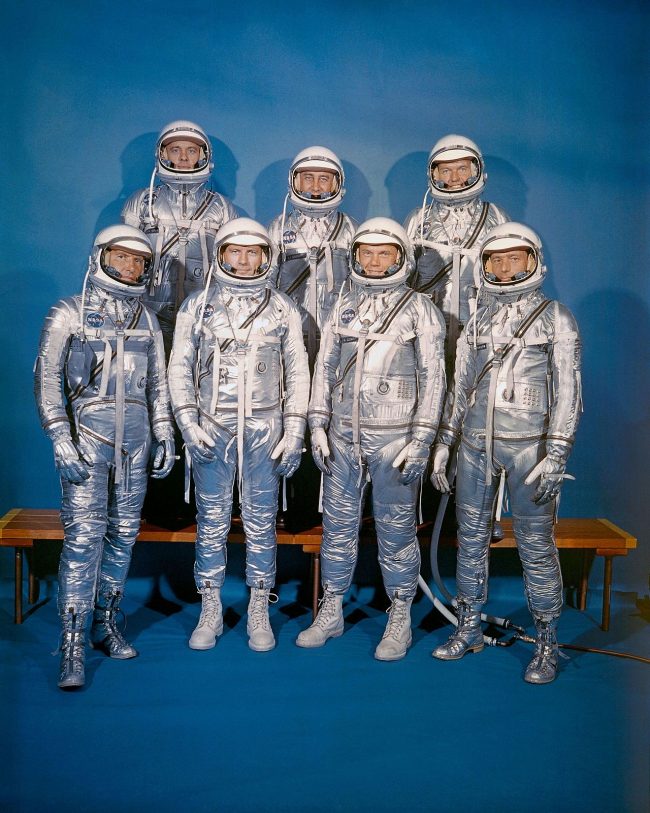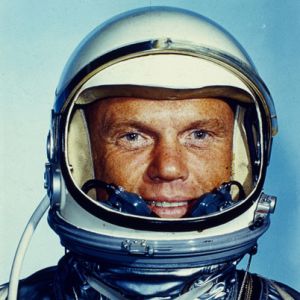

On October 4, 1957, the Russians shocked the United States by successfully launching a satellite into orbit. The former Nazi scientist Werner Von Braun (left) helped the United States develop missiles during the Cold War. The United States secretly brought more than 100 German scientists to Texas and then to Huntsville, Alabama, to develop American rocket technology as part of the nuclear arms race to build intercontinental ballistic missiles (ICBMs). Preferring to surrender to the Americans, von Braun and his team turned over 100 unfinished V-2 rockets and 14 tons of spare parts and blueprints. At the end of the war, Russian and Allied forces raced to Berlin as the Nazi regime collapsed in the spring of 1945. The greatest advance in rocket technology took place in Nazi Germany, where Werner von Braun led efforts to build V-2 and other rockets that could hit England when launched from continental Europe, spreading terror among the British population during World War II. In Russia, Konstantin Tsiolkovsky developed the idea of rocket technology, and his ideas bore fruit when they influenced Sergei Korolev in the 1930s. Meanwhile, German rocketeer Hermann Oberth read Goddard’s research and fired the first liquid-fueled rocket in Europe in 1930, with the dream of spaceflight in mind.

American Robert Goddard launched one from a Massachusetts farm in 1926 and further developed the technology on a testing range in New Mexico in the 1930s. The origins of spaceflight occurred a few decades before World War II, with the pioneering flights of liquid-fueled rockets. The space race was one of the peaceful competitions of the Cold War and pushed the boundaries of the human imagination. Only 12 years after the Russians launched a satellite into orbit around the Earth, Americans sent astronauts to walk on the moon. The nuclear arms race helped lead to the development of rocket technology that made putting humans into space a practical reality in a short time. The Cold War between the United States and Soviet Union took shape as a geopolitical struggle around the globe, an ideological contest between capitalism and communism, a nuclear arms race, and a space race. He supported Roosevelt’s New Deal, but thought it “went too far” he was hawkish on defence but opposed the MX intercontinental missile he supported Jimmy Carter, but opposed him on the Salt 2 limitation pact.Use this Narrative at the beginning of the chapter to discuss how the Space Race culminated in the United States’ launch of Apollo 11. While his attention to detail buttressed his arguments, his speeches seldom electrified his audiences.Īs a politician, Glenn was generally centrist.

Initially he had concentrated on three areas: foreign relations, governmental affairs, and the elderly.Īfter 1984 he broadened his brief, clashing regularly with Ronald Reagan over nuclear proliferation issues as well as becoming an expert on defence and energy. Glenn returned to the Senate, and continued to focus on the issues that concerned him. Once again, however, his desultory performances as a public speaker fatally undermined him after poor showings in the early primaries, he dropped out of the race, $3 million in debt. In a film of Tom Wolfe’s The Right Stuff (1983), Glenn had been played sympathetically by Ed Harris, and many commentators considered Glenn to be a strong candidate. A politician of conviction and integrity, his strength lay in his sense of duty and his commitment to his country.īut he was hampered by a certain lack of charisma and a plodding delivery that served him badly at the hustings and was at odds with his status as a daring flying ace. Having embarked on a political career, he served as Senator for Ohio from 1974 to 1998 and sought the Democratic nomination in the 1984 presidential election.Īs the quintessential all-American hero, Glenn might have been expected to scale the summit of the US political system. He was also the first pilot to make a supersonic transcontinental flight. John Glenn, the astronaut, fighter pilot and politician, who died in 2016 aged 95, became in 1962 the first American to orbit the Earth almost four decades later, at the age of 77, he became the oldest person to venture into space when he blasted off once more aboard the Space Shuttle Discovery.Īs a fighter pilot in the Second World War and Korean War, Glenn won four Distinguished Flying Crosses and 18 Air Medals.

This obituary has been republished as part of The Telegraph’s commemoration of the 50th anniversary of the first human landing on the Moon.


 0 kommentar(er)
0 kommentar(er)
